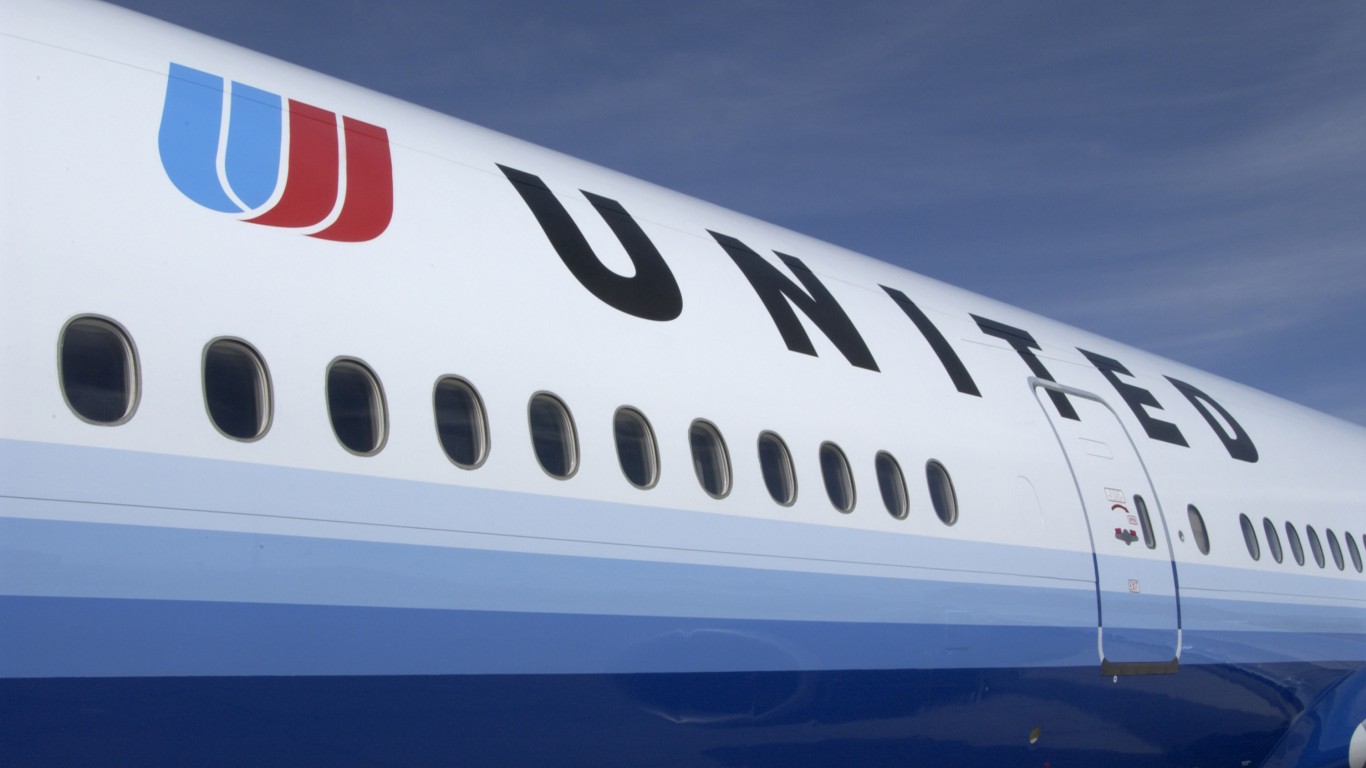Transportation
Coronavirus Set to Cost Airlines Over $29 Billion in 2020 Revenues

Published:
Last Updated:

The airline industry was already having a tough time in 2019 as Boeing Co. (NYSE: BA) woes in the wake of two fatal 737 Max crashes caused the global fleet to be shut down. This created a situation in which other planes had to be shuffled around and many routes or schedules had to be altered immediately rather than months later. Now the airlines have had to take a hit on flights to and from China, with demand being affected around Southeast Asia due to the Covid-19 novel coronavirus.
The public has some safety concerns about flying into and out of areas where the coronavirus has hit. After all, airplanes, very similar to cruiseliners, are sometimes considered petri dishes where germs are easily spread.
The International Air Transport Association (IATA) has released its initial assessment of just how bad the impact of the novel coronavirus will be for the airlines. The data and estimates are still rather preliminary, and they could change drastically if things were to get worse or last longer than expected, but IATA’s estimate for the Asia-Pacific region alone is calling for a potential 13% loss in demand for the entire year of 2020.
Growth for the region’s airlines was originally forecast to be 4.8%, but the net impact from the coronavirus is now projected to be −8.2% for the full year. In dollar terms, this comes to a $27.8 billion revenue loss for 2020. The bulk of that loss is in China itself, with a projected loss of $12.8 billion in carriers.
IATA sees carriers outside of the Asia-Pacific region losing about $1.5 billion in revenues, but that assumes the demand loss is limited just to the markets that are linked to China.
Adding these estimates up comes to $29.3 billion in lost revenues. That is 5% lower passenger revenues than in the IATA 2020 forecast issued in December. It also represents a 4.7% cut to global demand, so the prior growth forecast of 4.1% issued in December would now translate to a 0.6% drop in global passenger demand this year.
Estimates of this sort can be rather tricky. In some cases, it’s a bit like having someone forecast the weather from inside a storm. Most storms cause no problems and floods, but if they park somewhere and don’t move, that assumption goes out the window.
IATA said that the newly updated estimates are based on the period after the coronavirus outbreak having a similar “V-shaped” impact on demand that had been seen in the past during and after the SARS outbreak, which was a six-month period of sharp decline in travel followed by a rapid recovery. IATA also pointed out that the 2003 SARS outbreak caused a 5.1% drop in the revenue passenger kilometers carried by Asia-Pacific airlines.
IATA also is assuming that the main public health emergency remains in China, but it warned that the impact to airlines would be more negative if that were to spread around the Asia-Pacific markets. As for the actual impact, IATA said:
It is premature to estimate what this revenue loss will mean for global profitability. We don’t yet know exactly how the outbreak will develop and whether it will follow the same profile as SARS or not. Governments will use fiscal and monetary policy to try to offset the adverse economic impacts. Some relief may be seen in lower fuel prices for some airlines, depending on how fuel costs have been hedged.
Alexandre de Juniac, IATA’s director general and CEO, said of the Covid-19 impact and updated forecasts:
These are challenging times for the global air transport industry. Stopping the spread of the virus is the top priority. Airlines are following the guidance of the World Health Organization (WHO) and other public health authorities to keep passengers safe, the world connected, and the virus contained. The sharp downturn in demand as a result of COVID-19 will have a financial impact on airlines—severe for those particularly exposed to the China market. We estimate that global traffic will be reduced by 4.7% by the virus, which could more than offset the growth we previously forecast and cause the first overall decline in demand since the SARS crisis of 2003. And that scenario would translate into lost passenger revenues of $29.3 billion. Airlines are making difficult decisions to cut capacity and in some cases routes. Lower fuel costs will help offset some of the lost revenue. This will be a very tough year for airlines.
The China Eastern Airlines Corp. Ltd. (NYSE: CEA) American depositary shares were down about 3.5% at $24.58 in midday trading on Thursday, a drop of almost 11% from January 17. China Southern Airlines Co. Ltd. (NYSE: ZNH) was down 2.5% at $29.92 on Thursday, which is about 12.5% lower since January 17.
The American air carriers that fly internationally were faring a bit better. American Airlines Group Inc. (NASDAQ: AAL) was up about 1.4% at $28.72 on Thursday, and it closed as low as $26.01 in the aftermath of the coronavirus. Delta Air Lines Inc. (NYSE: DAL) was up 0.2% at $58.65, and its dividend-adjusted low close was $55.66 over the relative period. United Airlines Holdings Inc. (NYSE: UAL) was up 0.8% at $80.08 on Thursday, and the low close since January 17 has been $74.80.
Obviously, these numbers are not good news on the surface. United generated over $43 billion in revenues in 2019, and American Airlines generated over $45 billion in 2019 revenues. Delta’s total revenue increased to a record $47 billion in 2019. If these losses really are contained mostly in China and then in the surrounding Asia-Pacific markets, maybe the exposure isn’t all that bad in the grand scheme of things.
Thank you for reading! Have some feedback for us?
Contact the 24/7 Wall St. editorial team.